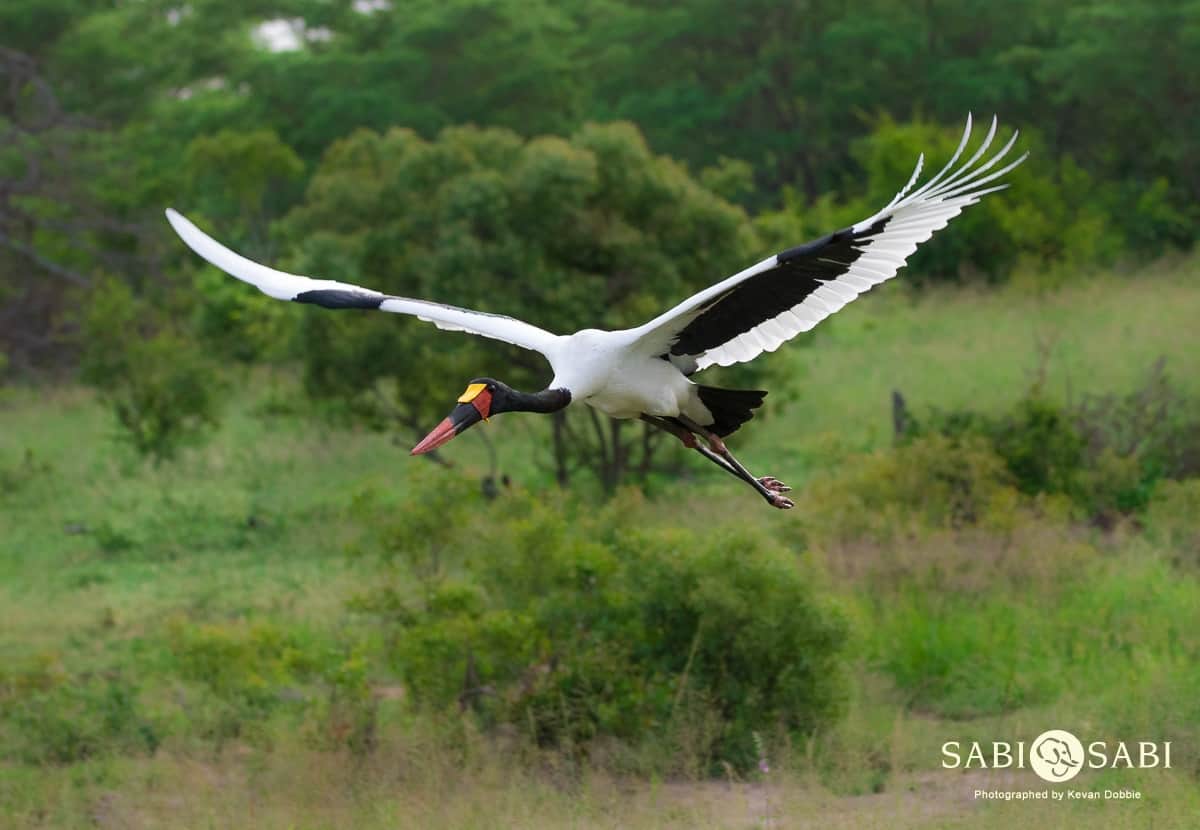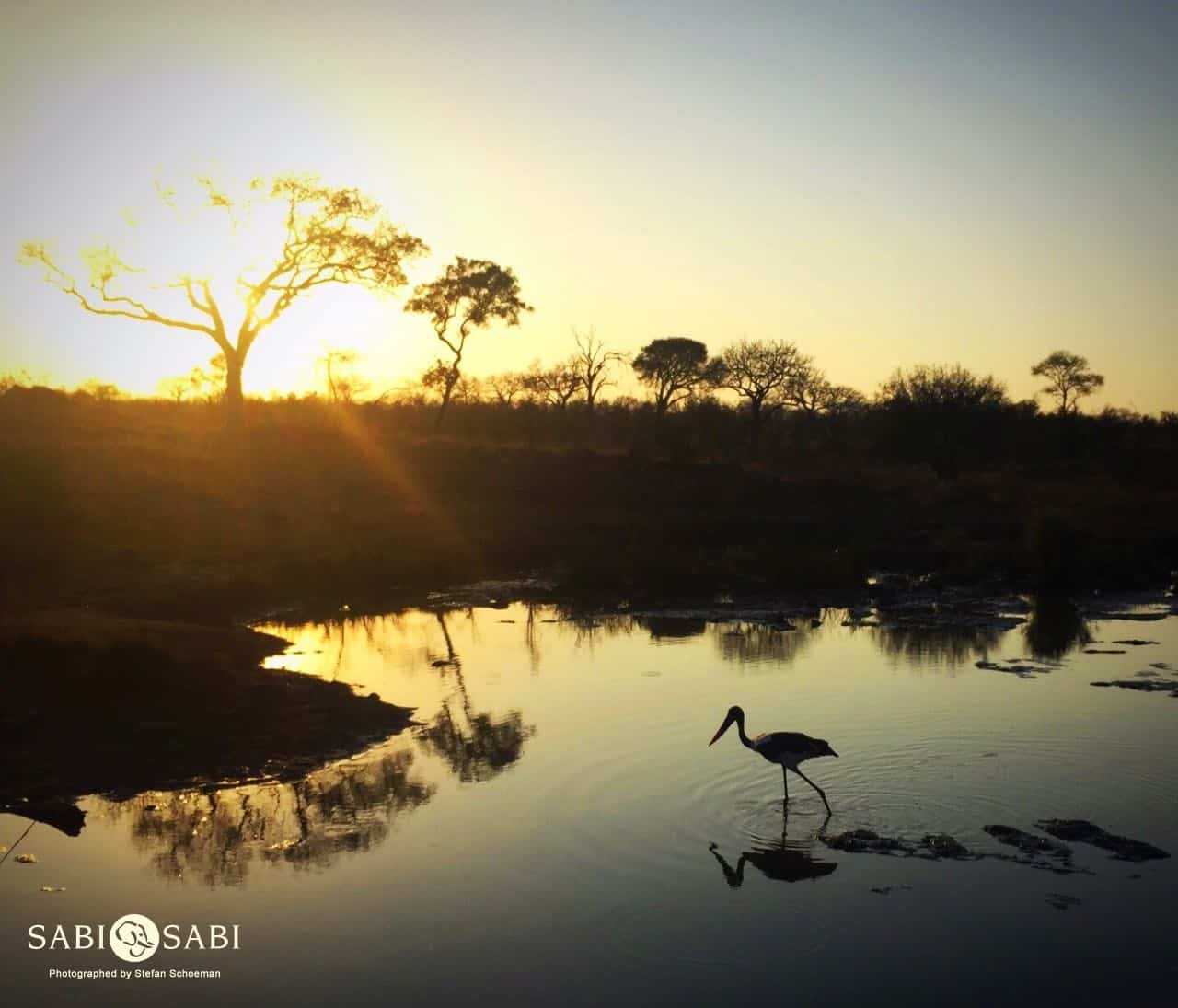Saddle-billed Stork
on Apr 05, 2019Species name: Saddle-billed Stork
Scientific name: Ephippiorhynchus senegalensis
Weight: Male: ±7 kg - Female: ±5 kg
Shoulder Height: Male: ±150 cm - Female: ±150 cm
Wingspan: ±250 – 275 cm
General Habitat: Vast open spaces along wetlands/water bodies
Diet: Fish species, fresh water crabs, frog species as well as other small birds and reptiles.

Sabi Sabi Private Game Reserve is home to number of bird species that can be viewed and recorded on the Eastern-side of South Africa. This area is well-known for its birding and provides a long vast stretch of natural habitat suitable for the birdlife of this area. We boast multiple species (over 300 species of birds) along with a variety of birds of prey, water birds as well as endangered and rare species.
The Saddle-billed Stork is one of our endangered species and the tallest stork in the world that occurs in this area and sightings are frequently recorded. They are usually seen on their own or in pairs and will pair for life (monogamous) and have been seen re-using nesting sites. They are not a migratory species, however, they are extremely territorial and may move their territory based on the shortage of habitat and food. The Saddle-billed Stork is usually found throughout Sub-Saharan Africa from countries as high up as Ethiopia, all the way down to South Africa.
The general characteristic of this bird (as seen in the photos), is large laterally compressed bill with red and black stripes, along with black legs containing a red garter as well as red feet. They will also have a bright yellow leathery-type of saddle at the top of the bill and this is where they have received their name. They have black and white plumage on the body and primary flight feathers are a beautiful white colour. Communication in this species is relatively quiet but have been seen clattering their bills at nesting sites. There is a difference between male and female, these differences are referred to as sexual dimorphism. The male will be slightly larger than the female, however, the easiest way to identify the gender is by looking at the iris. A female will have a yellow eye iris and a male will have dark eyes and the addition of two small yellow wattles on the underside of the bill at the base.
When nesting, the nesting site is constructed by both male and female. The nesting area is located quite high up off the ground, positioned on the main branch on the top of large trees situated close to a wetland-type area. The reason for this peculiar choice of nest site is to ensure total protection of chicks while the parents raise their young after hatching. When laying eggs, the female will lay anything between one to five eggs in a clutch and incubation is done by both parents for 32 – 35 days until hatching. Both parents will join in parental care of the chicks and feed them until the chicks are ready to fledge at about 58 – 100 days old.
As these bird species are listed as Endangered Species on the IUCN Red Data List in South Africa – the main reason for their decline in population is damage caused to wetlands, habitat destruction as well as pollution due to urbanization and development.
My Memorable Sighting
It was a late afternoon; the sun was just about to set and my guests and I were on our way to stop for drinks to admire the beautiful sunset before us. Just before stopping for drinks, we decided to scan past an active waterhole to see if we could find some Spotted Hyena who have a den in the nearby area and are usually found within close proximity to waterholes, especially on such a hot day. Upon arriving at this waterhole, our attention was diverted from a small grouping of Spotted Hyena towards two beautiful Saddle-billed Storks wading in the middle of this waterhole. We spent about 15 – 20 minutes just admiring these beautiful water birds as they were able to capture multiple fish. Truly an amazing sighting and experience. (See short video below).
Photo & Video Content














